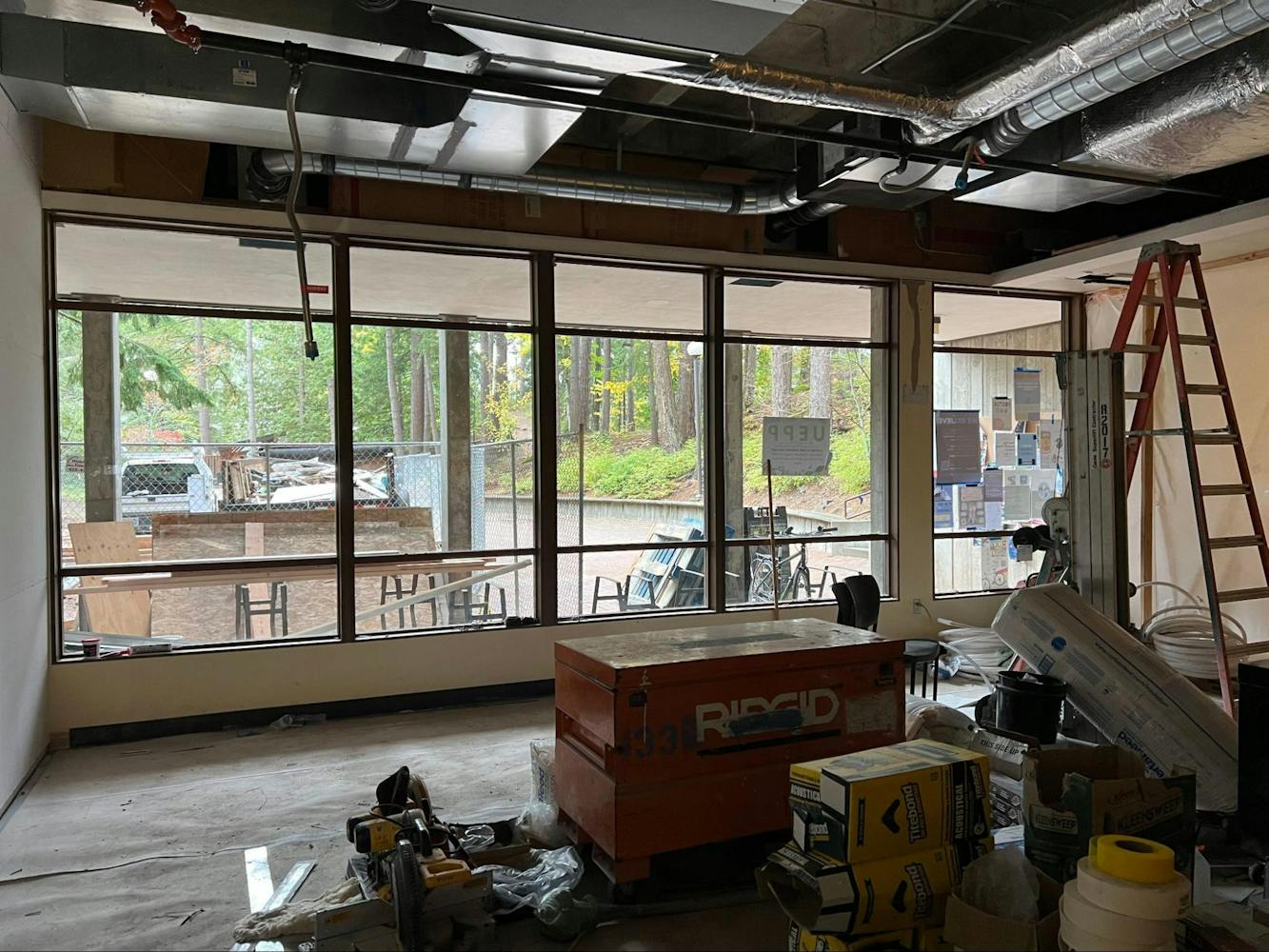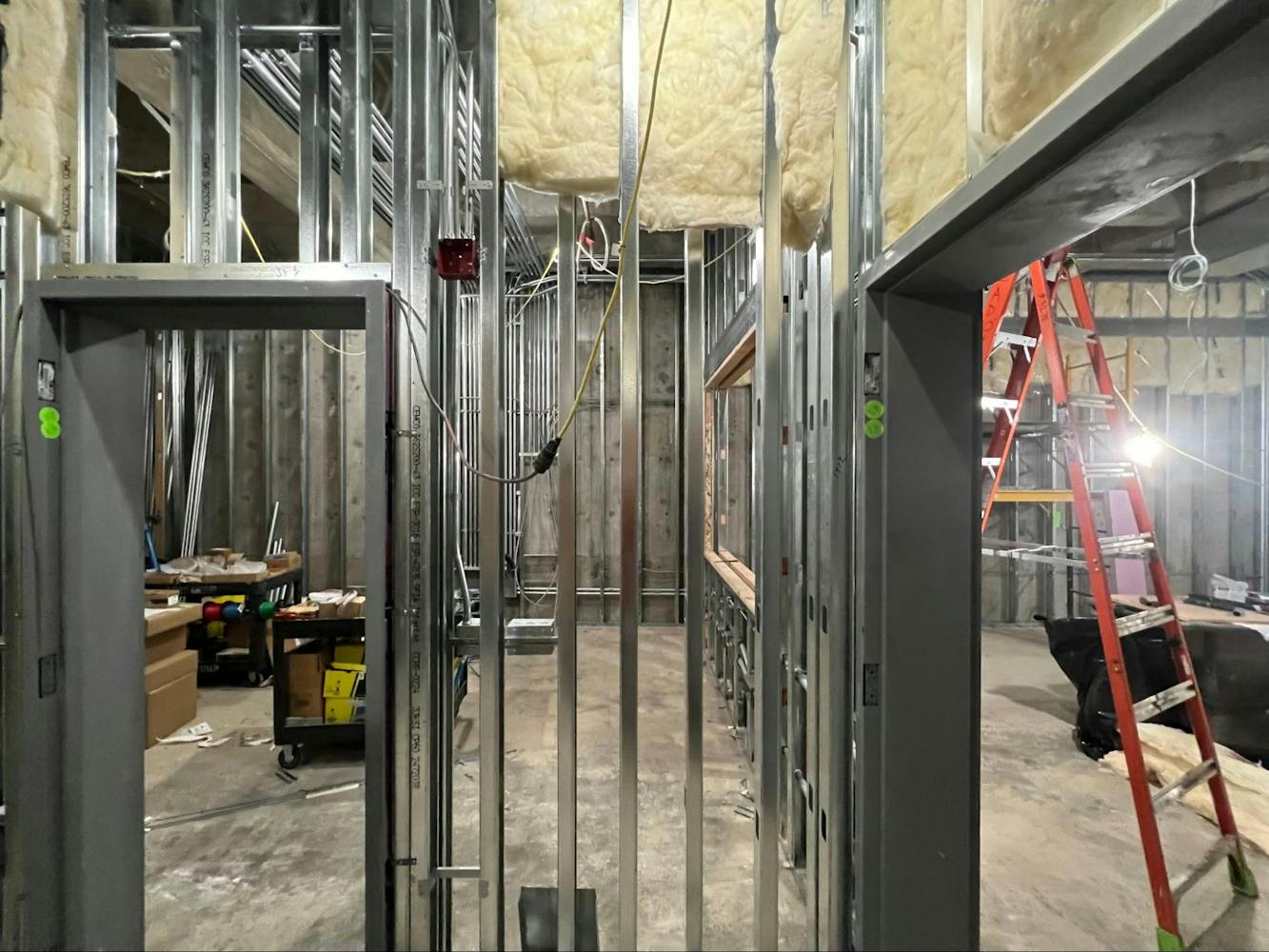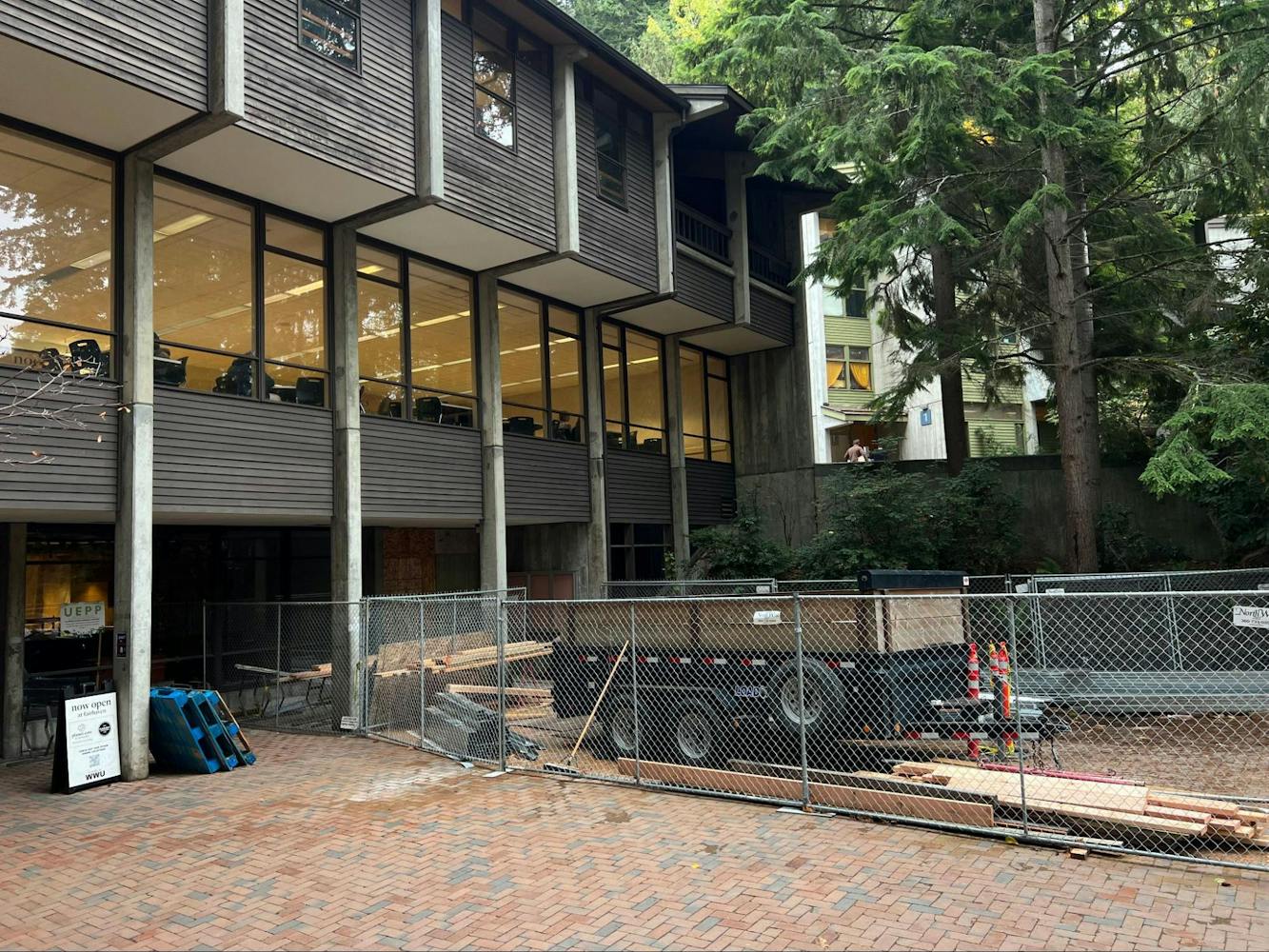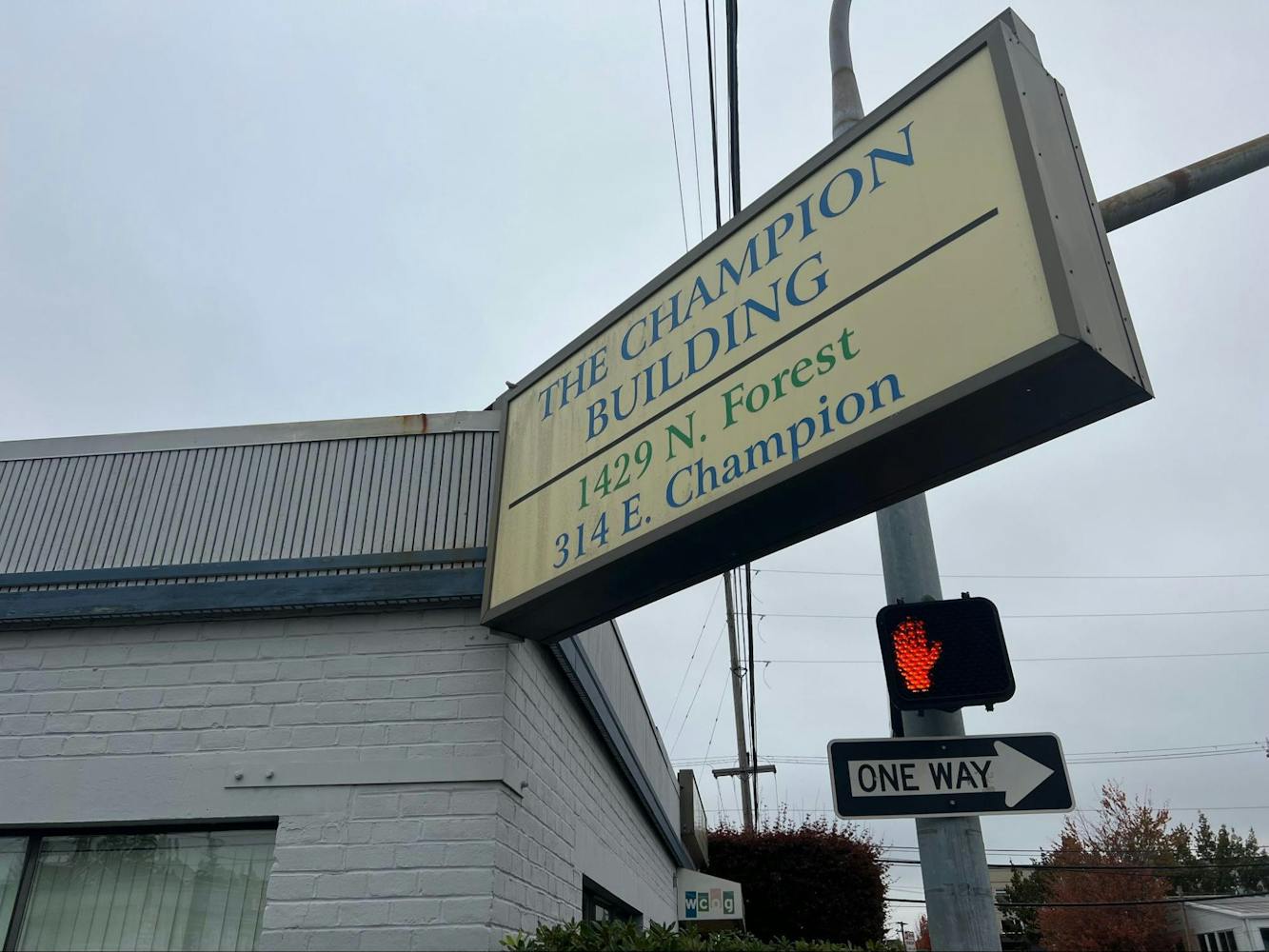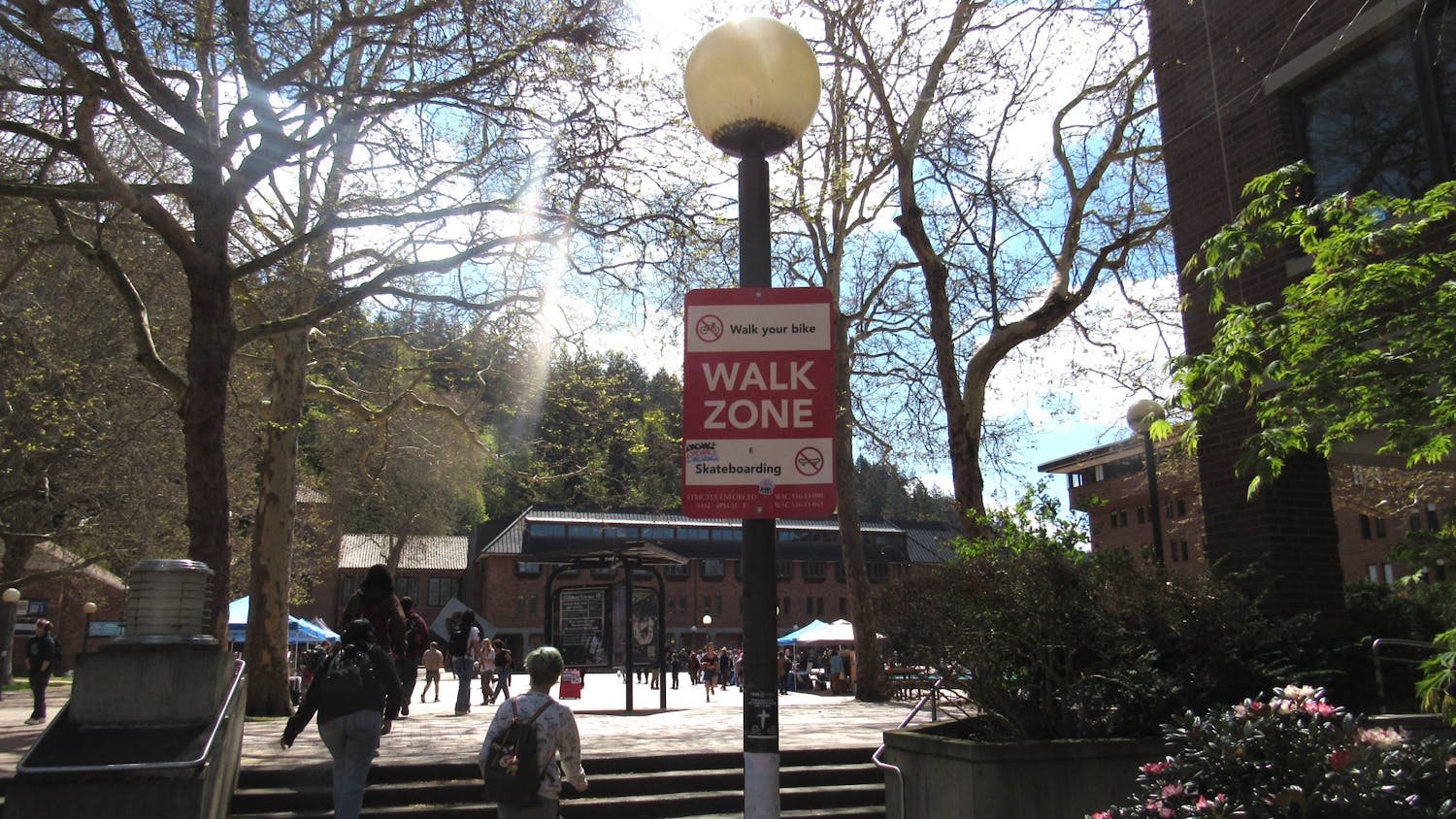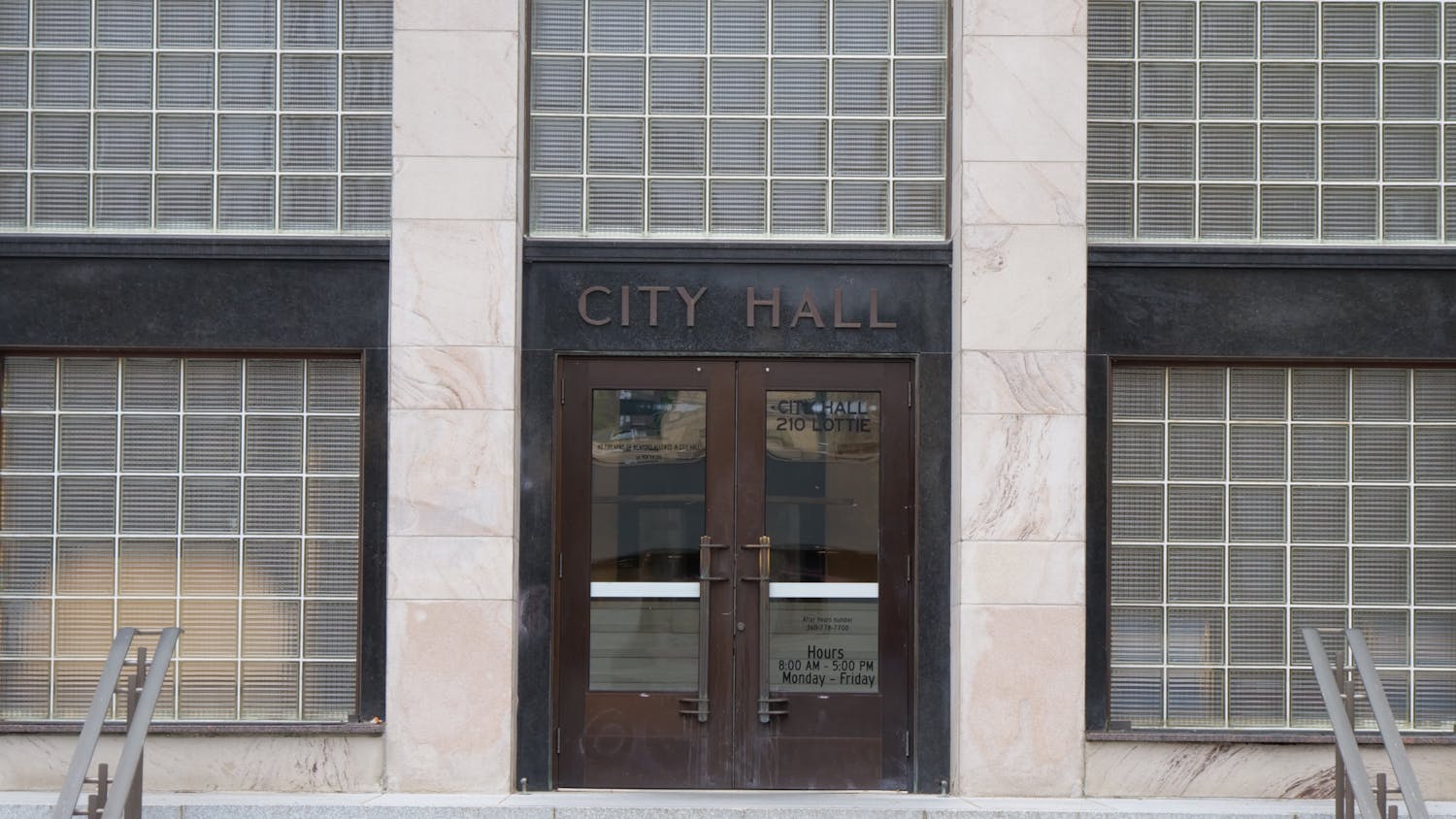A new recording studio is under construction in the Fairhaven building on Western Washington University’s campus. Salish Sea Recording Studio is set to open its doors in May, Fairhaven Dean Caskey Russell said.
Students in the Audio Technology, Music and Society program currently record in one of two places: a small studio in the Fairhaven building on campus or downtown at Champion St. Sound Studios in a room rented out through the school.
It can be inconvenient for students to travel back and forth between campus and downtown for classes and recording sessions at Champion St. Sounds, said Liam McFarlane, a fourth-year Western student in the ATMS minor.
“The current Fairhaven studio is really good for learning how to use routing and general components of a recording studio but it’s really small. So the actual quality of the recordings you’re able to get there is pretty limited,” McFarlane said.
The Champion St. Sounds studio has a larger live room where sounds are recorded. The size and shape of a room matters to the quality of the recording. The new studio will have a main control room, a large recording space and a smaller one for recording vocals.
Students in the ATMS program start by learning the mechanics of audio recording, and progress through programs like ProTools and Ableton Live into advanced studio recording. Alongside those classes, students take more abstract, theoretical courses relating to music and society.
“It’s good to have both the theoretical knowledge behind music thinking and the practical, nitty-gritty details of how to market yourself and what unique skills you have that other people don’t necessarily have,” McFarlane said.
As well as being more physically accessible to students, the project aims to bring more visibility to the ATMS program.
“[The Salish Sea Recording Studio is] going to be central in Fairhaven and highly visible to people walking by, whereas the space they have now isn’t really on anyone’s radar,” said Forest Payne, project manager and university planner.
Fairhaven College has aspirations of using the new facilities to record spoken word and language for the House of Healing longhouse project. Payne says construction on the longhouse will begin soon.
The longhouse project aims to honor the fact that the school is built on the ancestral lands of the Coast Salish peoples and to provide educational opportunities for Native students.
The new studio will be filled with local art representing the Salish Sea region, said donor Royal Hanson.
The idea and funds for the recording studio upgrade came from Hanson, who was inspired by the Georgina Joshi recording studio at the University of Indiana. Hanson is a Fairhaven alumnus who has come back to Western to rent out the downtown studio space for his own personal use.
Construction was originally forecasted to end in January and classes were to begin winter quarter. Now it's expected to end in May. The delay is unrelated to the ongoing sewer problems around Fairhaven, Payne said.
Construction standards for this project are higher than what is normally expected of projects of this scale, because recording studios have to be built with acoustics in mind.
The delay is due to the need to order and install acoustic paneling and finish materials outside of the contract with architecture firm Tiger Pearson, Payne said.
“There are much higher performance requirements for the acoustic separations so that they don’t have transmission between the spaces, and that recording tracks stay clean and sanitized from each other,” he said.
The noise from construction and the smell from ongoing sewer problems have made attending class in Fairhaven less convenient for some students.
“I’m obviously very excited about the space,” McFarlane said, “But I can imagine that someone who isn’t in the minor and maybe doesn’t even know what’s going on with the construction would feel kind of like, ‘Hey, where’s the cool lounge space I used to be able to sit at?’”
While construction can be an inconvenience, the donor and the university expect the investment to pay off in the long run as music industry revenue continues to grow.
“It’s for the students. It’s not only to create wonderful, inspiring music,” Hanson said. “There are other opportunities, like voiceover work, which brings a lot of income to recording studios and that could be a profession for students.”
Seddie LeBlanc (they/she) is a campus news reporter for The Front this quarter. They are a third-year journalism student at Western with a minor in law, diversity, and justice. In her free time, she enjoys reading and hanging out with friends. They can be reached at seddieleblanc.thefront@gmail.com.


